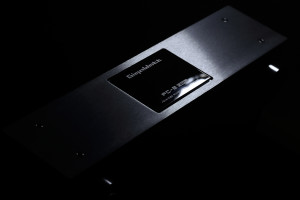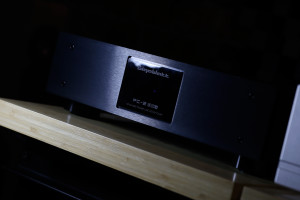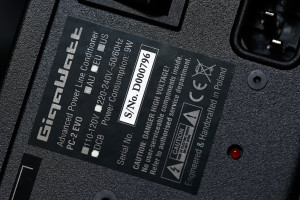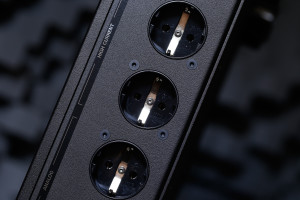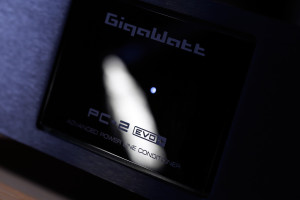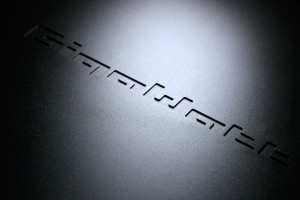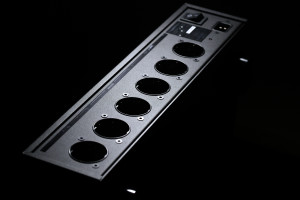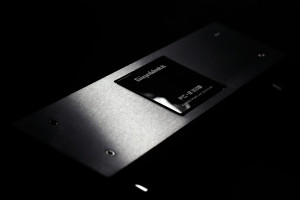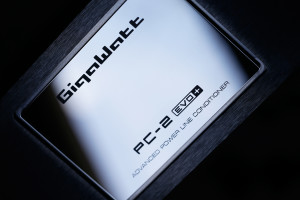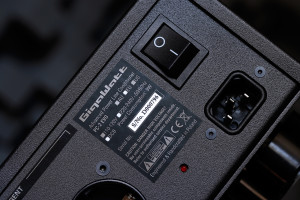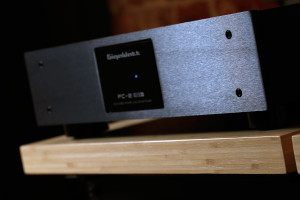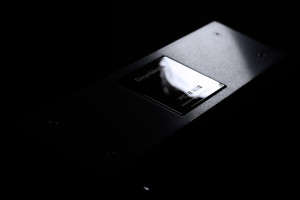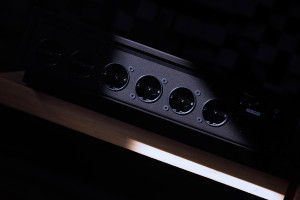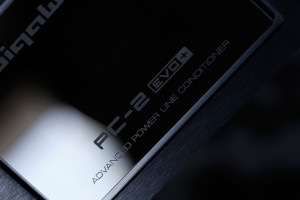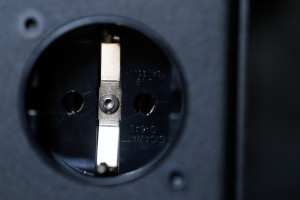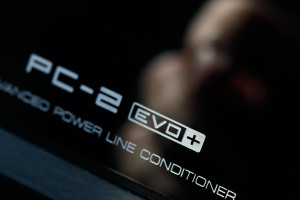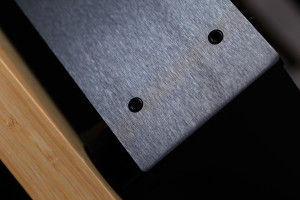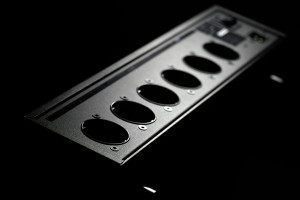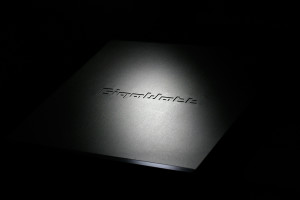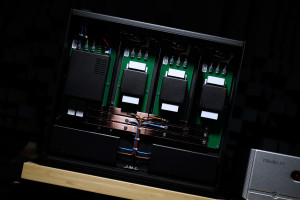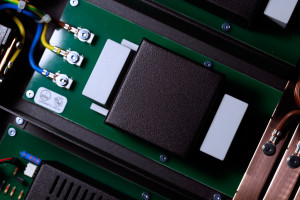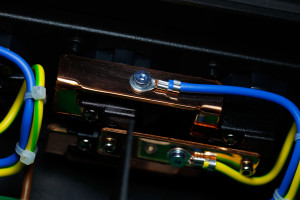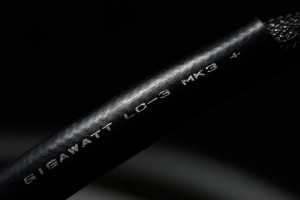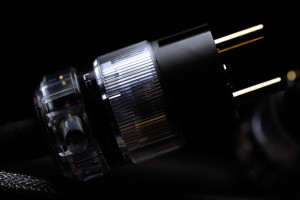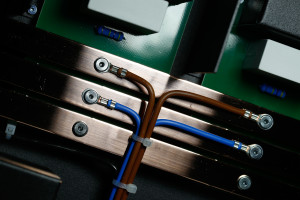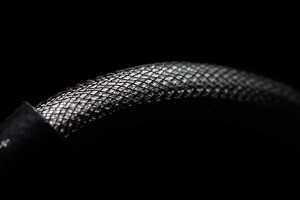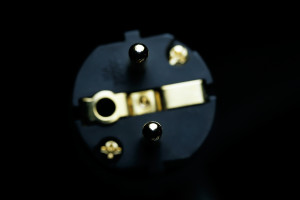GigaWatt is famous for power delivery related products and only those. No sources, amplifiers, speakers, nothing. And still, this is one of the most, if not the most known Polish audio house in the world. As a long time user of its two ‘small’ products, I’ve decided to take a look at something much bigger. GigaWatt PC-2 EVO+ has arrived. Enjoy.
Introduction
Most audio manufacturers active in Poland are small and unknown outside of this country, several were able to gain some recognition abroad, but just a few became fully grown and commercially successful businesses with very impressive distribution network all over the globe. If I had to cherry-pick the most well known audio house, my finger would point at GigaWatt and one quick glimpse at this operation’s homepage reveals why. Its products are sold in almost 40 countries and this is a very respectable number. It’s safe to say that GigaWatt’s story is truly a tale of success.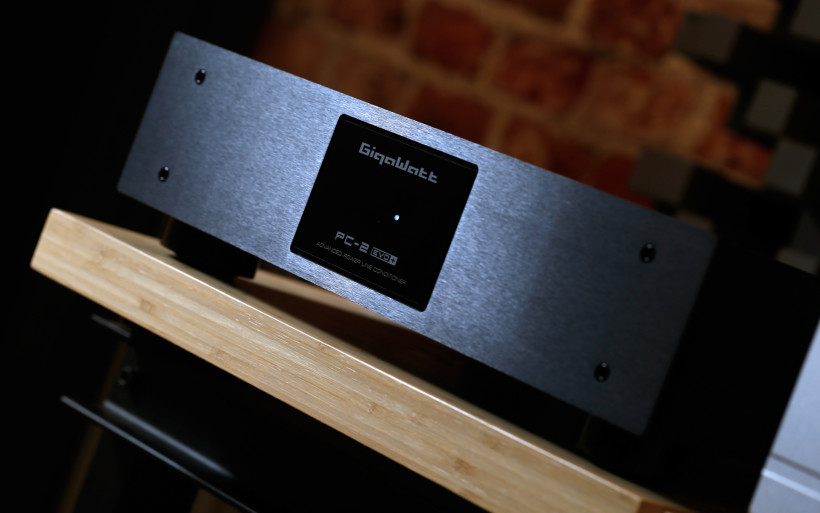 GigaWatt was founded by Adam Schubert in 2007, but his audio adventure started almost a decade earlier, in 1998. Back then he co-founded Power Audio Laboratories and held the position of the main designer in this company. These dates indicate that he’s been in the audio industry at least for two decades or so, but most importantly he became a specialist. Power delivery was and still is his thing since day one. Past domestic Audio Show event in 2002, Adam’s work was recognized among local enthusiasts and years of constant R&D, improvements, great products and smart marketing led to a worldwide known audio house with a stand-alone facility located in Zgierz, a small town which borders with one of the biggest Polish cities – Łódź.
GigaWatt was founded by Adam Schubert in 2007, but his audio adventure started almost a decade earlier, in 1998. Back then he co-founded Power Audio Laboratories and held the position of the main designer in this company. These dates indicate that he’s been in the audio industry at least for two decades or so, but most importantly he became a specialist. Power delivery was and still is his thing since day one. Past domestic Audio Show event in 2002, Adam’s work was recognized among local enthusiasts and years of constant R&D, improvements, great products and smart marketing led to a worldwide known audio house with a stand-alone facility located in Zgierz, a small town which borders with one of the biggest Polish cities – Łódź.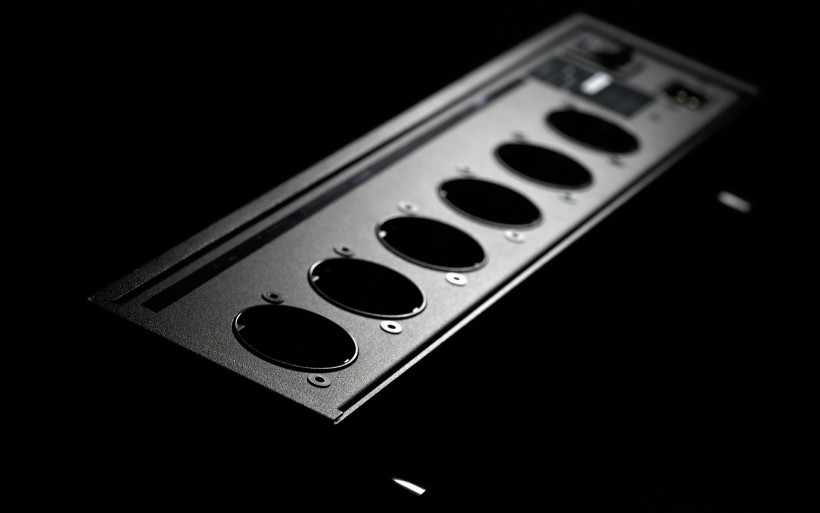 GigaWatt is not a boutique shop focused on direct sales and overgrown portfolio but a well-developed and steady business specialized in power related components only. One won’t see a power amp or a DAC with GigaWatt sticker on it, not a chance, on the contrary to four power conditioners, three power filters, five power cables, several accessories and components developed to be used within a home power grid and… that’s it. If you think this is not the way to go in the long run, think again. In case of GigaWatt it is. Adam’s work and approach are very specific. Instead of introducing new products one after another, he’s focused on upgrades of goods already available. When right time comes and this procedure happens, always all across the board and oftentimes extensively.
GigaWatt is not a boutique shop focused on direct sales and overgrown portfolio but a well-developed and steady business specialized in power related components only. One won’t see a power amp or a DAC with GigaWatt sticker on it, not a chance, on the contrary to four power conditioners, three power filters, five power cables, several accessories and components developed to be used within a home power grid and… that’s it. If you think this is not the way to go in the long run, think again. In case of GigaWatt it is. Adam’s work and approach are very specific. Instead of introducing new products one after another, he’s focused on upgrades of goods already available. When right time comes and this procedure happens, always all across the board and oftentimes extensively.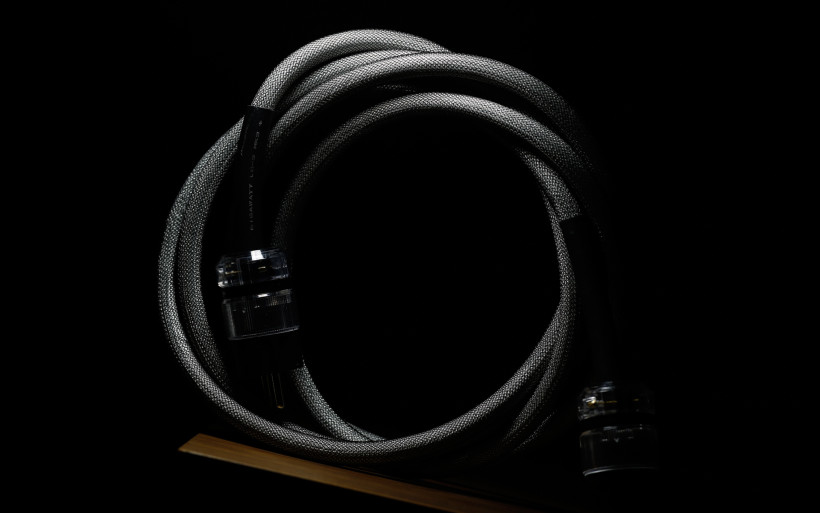 In GigaWatt, crucial things aren’t rushed but occur naturally instead. Steady growth, constant development and production consistency are the pillars of this operation’s unshaken reputation. The game is not about reaching the top but remaining there and Adam knows how to pull this off. He has everything under control, which builds confidence. Years back yours truly bought two GigaWatt products – Pf-1 and PF-2 models – and has been happy with them ever since. Yet the itch to try something bigger and more serious has always been there too and that’s how GigaWatt PC-2 EVO+ became this review’s hero.
In GigaWatt, crucial things aren’t rushed but occur naturally instead. Steady growth, constant development and production consistency are the pillars of this operation’s unshaken reputation. The game is not about reaching the top but remaining there and Adam knows how to pull this off. He has everything under control, which builds confidence. Years back yours truly bought two GigaWatt products – Pf-1 and PF-2 models – and has been happy with them ever since. Yet the itch to try something bigger and more serious has always been there too and that’s how GigaWatt PC-2 EVO+ became this review’s hero.
Build
The product arrived in a large cardboard with yet another one inside. Snugged via rather stiff fabric PS-2 EVO+ was found in-between two foam forms, topped with two small pasteboards. Velcro strapped and with plugs protected via plastic caps, GigaWatt LC-3 MK3+ power cable, a pair of cotton gloves and a manual were inside these. That kind of packaging is the industry standard. Still, black duct tape with manufacturer’s logo on the outside and everything in general very tidy and matched inside are indicators that GigaWatt is a serious operation very much into small, yet noticeable things. They’ve been around long enough to know that many customers pay attention to details.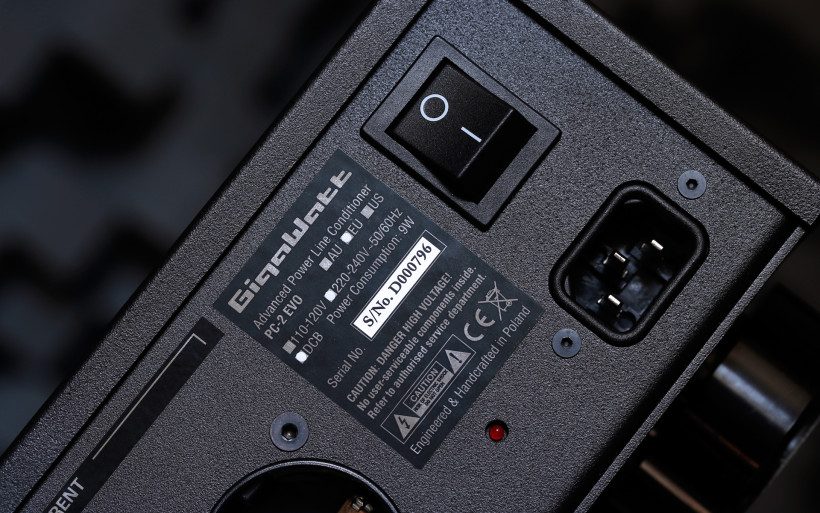 GigaWatt PC-2 EVO+ is a power line conditioner, hence a device designed to do two things; to provide protection against interference and voltage spikes present in home power grid and to filter current prior to its delivery to connected devices. The ‘EVO+’ part indicates that my loaner belongs to the third GigaWatt generation. The first PC-2 conditioner introduced years back was based on separating transformers and these were ditched in 2010 in favor of extensive multistage filtering. That’s how the EVO series was born and this major transformerless revamp was performed all across the board. Then, as a result of further upgrades, improvements and tweaks, the ‘+’ was added. Many manufacturers would probably use completely new naming scheme at this point, yet Adam decided to stick with current order as customers probably got used to it.
GigaWatt PC-2 EVO+ is a power line conditioner, hence a device designed to do two things; to provide protection against interference and voltage spikes present in home power grid and to filter current prior to its delivery to connected devices. The ‘EVO+’ part indicates that my loaner belongs to the third GigaWatt generation. The first PC-2 conditioner introduced years back was based on separating transformers and these were ditched in 2010 in favor of extensive multistage filtering. That’s how the EVO series was born and this major transformerless revamp was performed all across the board. Then, as a result of further upgrades, improvements and tweaks, the ‘+’ was added. Many manufacturers would probably use completely new naming scheme at this point, yet Adam decided to stick with current order as customers probably got used to it.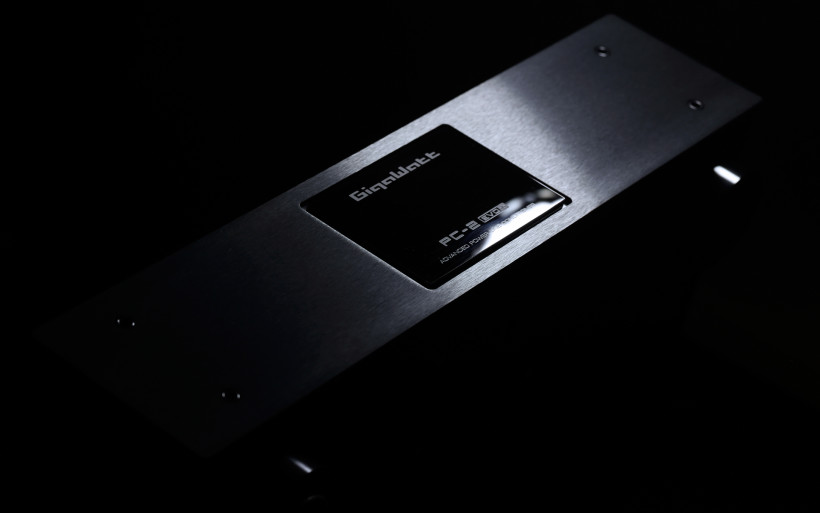 Visually GigaWatt PC-2 EVO+ is a quite usual and with its dimensions (WxHxD) of 440x115x400mm and weight of 15.6kg it very much resembles a typical audio deck. This product’s maximum output power and current load are 3 680W and 16A respectively, whereas absorbed impulse current’s value is 20 000A. Black (or silver) brushed aircraft grade aluminium plate on its front sports four hex screws near each corner, whereas a rather large plexiglass window with manufacturer’s logo up high, model’s name down below and one white LED in-between is to be found in its centre. There’s an option to order a product with a different colour light, though. Higher tier GigaWatt models are equipped with voltage displays, yet that’s not the case with PC-2 EVO+ even as an upgrade feature.
Visually GigaWatt PC-2 EVO+ is a quite usual and with its dimensions (WxHxD) of 440x115x400mm and weight of 15.6kg it very much resembles a typical audio deck. This product’s maximum output power and current load are 3 680W and 16A respectively, whereas absorbed impulse current’s value is 20 000A. Black (or silver) brushed aircraft grade aluminium plate on its front sports four hex screws near each corner, whereas a rather large plexiglass window with manufacturer’s logo up high, model’s name down below and one white LED in-between is to be found in its centre. There’s an option to order a product with a different colour light, though. Higher tier GigaWatt models are equipped with voltage displays, yet that’s not the case with PC-2 EVO+ even as an upgrade feature.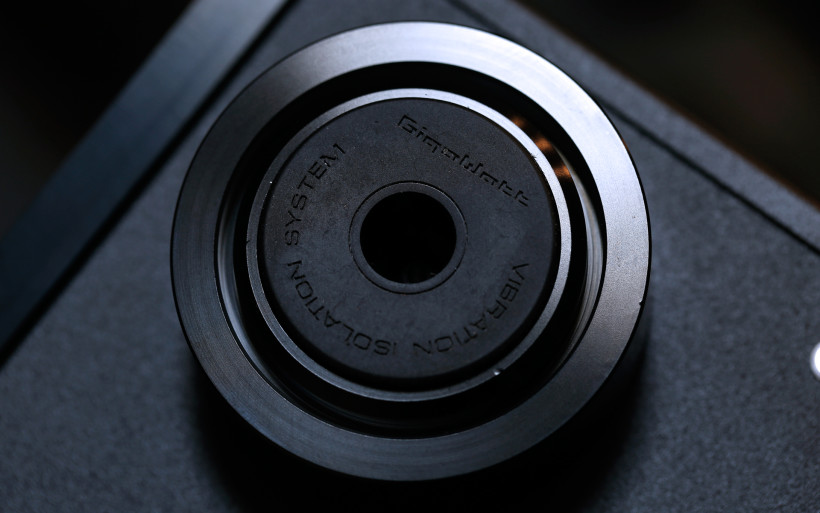 Six Schuko sockets grouped in three categories occupy the product’s rear. From left to right, each pair is meant to work with digital, analog and high current devices respectively. In close proximity there’s a nameplate with a serial number, voltage, input socket type, power consumption (9W), installed DC Blocker circuitry in case of my loaner etc. The ‘Engineered & Handcrafted in Poland’ writing is in there too. Red LED a bit below informs whether polarity’s in check and an IEC socket with an on/off switch a bit above closes the list. The product’s sides and top cover are made out of one U-shaped steel sheet, finished in matte black and decorated with deeply engraved manufacturer’s logo. It looks very nice. The product’s underbelly sports four aluminium feet with rubber washers. These are big, heavy and in general of quality, though – if one wishes to – alternatives based on GigaWatt’s proprietary Rolling-Ball Isolation System can be ordered for €660 extra. Another upgrade worth taking a closer look into – DC Blocker (€300) – was designed to block unwanted DC component. This phenomenon alternates AC sine wave to make it non-symmetrical, which further impacts all transformer based devices. To put it more bluntly, DC Blocker barriers an audio system from junk found in regular home power grids.
Six Schuko sockets grouped in three categories occupy the product’s rear. From left to right, each pair is meant to work with digital, analog and high current devices respectively. In close proximity there’s a nameplate with a serial number, voltage, input socket type, power consumption (9W), installed DC Blocker circuitry in case of my loaner etc. The ‘Engineered & Handcrafted in Poland’ writing is in there too. Red LED a bit below informs whether polarity’s in check and an IEC socket with an on/off switch a bit above closes the list. The product’s sides and top cover are made out of one U-shaped steel sheet, finished in matte black and decorated with deeply engraved manufacturer’s logo. It looks very nice. The product’s underbelly sports four aluminium feet with rubber washers. These are big, heavy and in general of quality, though – if one wishes to – alternatives based on GigaWatt’s proprietary Rolling-Ball Isolation System can be ordered for €660 extra. Another upgrade worth taking a closer look into – DC Blocker (€300) – was designed to block unwanted DC component. This phenomenon alternates AC sine wave to make it non-symmetrical, which further impacts all transformer based devices. To put it more bluntly, DC Blocker barriers an audio system from junk found in regular home power grids.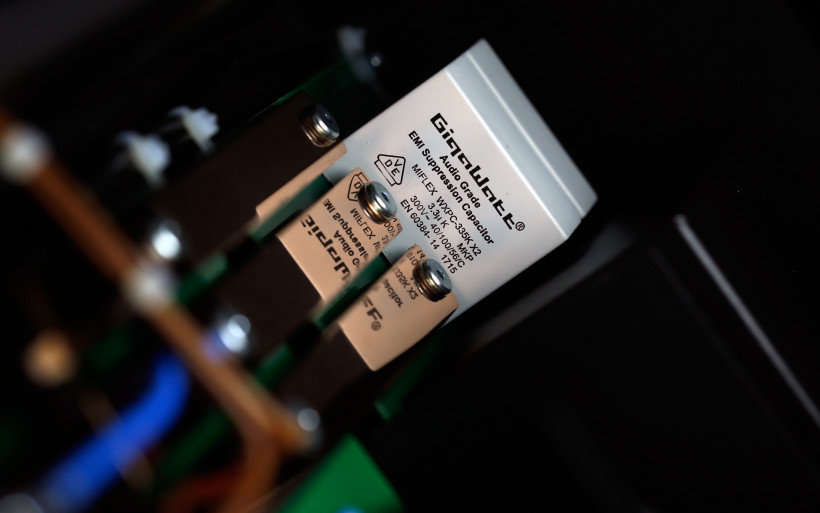 GigaWatt PC-2 EVO+ is made in a very utilitarian fashion. Precisely and in general finely made, this top shelf product was developed and assembled to do a very specific job. Stripped from any visual flamboyance it looks modest, minimalist and that’s perfectly fine and visually safe. But once one starts paying full attention to details, things unnoticed at first glance become much more obvious. I was told that each component found in any GigaWatt product is made for this manufacturer exclusively. The OEM parts days are long gone, now it’s about finding a quality supplier, cherry-picking and then customizing every semi-part there is. In order to meet the demand of very well developed GigaWatt distribution network, it goes rather without saying that Adam’s financial commitments have to be big. When he orders, it’s very likely that he orders a lot, here above-the-average manufacturing wishes come into play. And because of this attitude and QC in check, everything in my loaner fits perfectly and screams quality, even though the product itself visually is very simple. Nice work!
GigaWatt PC-2 EVO+ is made in a very utilitarian fashion. Precisely and in general finely made, this top shelf product was developed and assembled to do a very specific job. Stripped from any visual flamboyance it looks modest, minimalist and that’s perfectly fine and visually safe. But once one starts paying full attention to details, things unnoticed at first glance become much more obvious. I was told that each component found in any GigaWatt product is made for this manufacturer exclusively. The OEM parts days are long gone, now it’s about finding a quality supplier, cherry-picking and then customizing every semi-part there is. In order to meet the demand of very well developed GigaWatt distribution network, it goes rather without saying that Adam’s financial commitments have to be big. When he orders, it’s very likely that he orders a lot, here above-the-average manufacturing wishes come into play. And because of this attitude and QC in check, everything in my loaner fits perfectly and screams quality, even though the product itself visually is very simple. Nice work!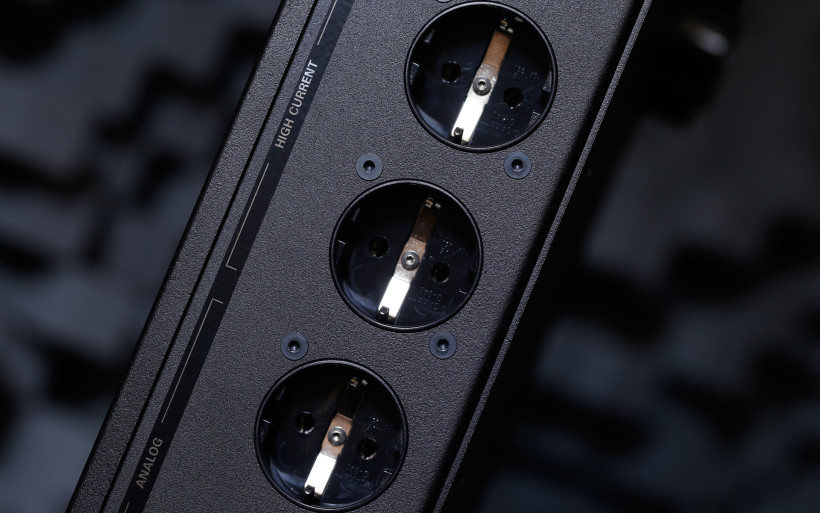 GigaWatt PC-2 EVO+ looks fantastic inside. Not a drop of solder is seen anywhere in sight, on the contrary to large screens, clamps and bolts, all exceptionally orderly. The product is based on multistage parallel filtration and seven main blocks. Phase control, surge suppression, DC Blocker circuitry, compensation batteries’ charging unit and entry-level filtration are all found in the starter stage under the biggest screen next to the IEC socket. Then current goes through highly conductive and massive C11000 cathode copper rails to a double buffering circuit loaded with high quality compensation batteries designed by GigaWatt. The goal here is to increase current efficiency with non-linear loads (i.e. power amplifiers) and decrease power differences between PC-2 EVO+’s input and outputs. Past this stage and prior to outputs based on – again – impressively massive copper bars, there are three separate sections powered in parallel. Each one is a bit different, aimed to work with different loads, yet all sport RLC blocks with GigaWatt’s proprietary filtering and decoupling capacitors topped with IP (Iron Powder) core filters.
GigaWatt PC-2 EVO+ looks fantastic inside. Not a drop of solder is seen anywhere in sight, on the contrary to large screens, clamps and bolts, all exceptionally orderly. The product is based on multistage parallel filtration and seven main blocks. Phase control, surge suppression, DC Blocker circuitry, compensation batteries’ charging unit and entry-level filtration are all found in the starter stage under the biggest screen next to the IEC socket. Then current goes through highly conductive and massive C11000 cathode copper rails to a double buffering circuit loaded with high quality compensation batteries designed by GigaWatt. The goal here is to increase current efficiency with non-linear loads (i.e. power amplifiers) and decrease power differences between PC-2 EVO+’s input and outputs. Past this stage and prior to outputs based on – again – impressively massive copper bars, there are three separate sections powered in parallel. Each one is a bit different, aimed to work with different loads, yet all sport RLC blocks with GigaWatt’s proprietary filtering and decoupling capacitors topped with IP (Iron Powder) core filters.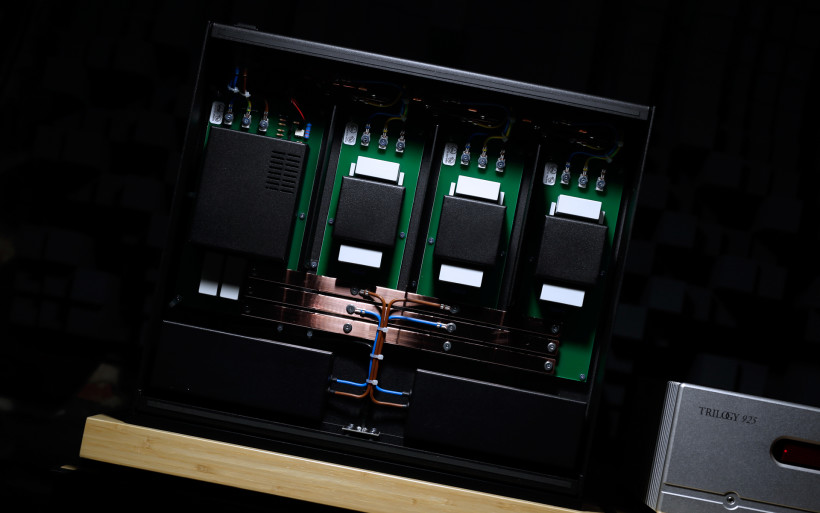 Adam told me that the only company able to deliver suppression capacitors with specs he was after – Miflex – was found not more than an hour away drive from GigaWatt’s HQ. And when asked about differences between his PC-2 EVO+ and my old PF-2 model, he said that – among many other things – the latter has one distribution branch shared among all connected devices and lacks any buffering circuitry inside. But in general, the most important difference is the whole concept of lossless power delivery, beyond reach in case of my trusty ol’ power strip.
Adam told me that the only company able to deliver suppression capacitors with specs he was after – Miflex – was found not more than an hour away drive from GigaWatt’s HQ. And when asked about differences between his PC-2 EVO+ and my old PF-2 model, he said that – among many other things – the latter has one distribution branch shared among all connected devices and lacks any buffering circuitry inside. But in general, the most important difference is the whole concept of lossless power delivery, beyond reach in case of my trusty ol’ power strip.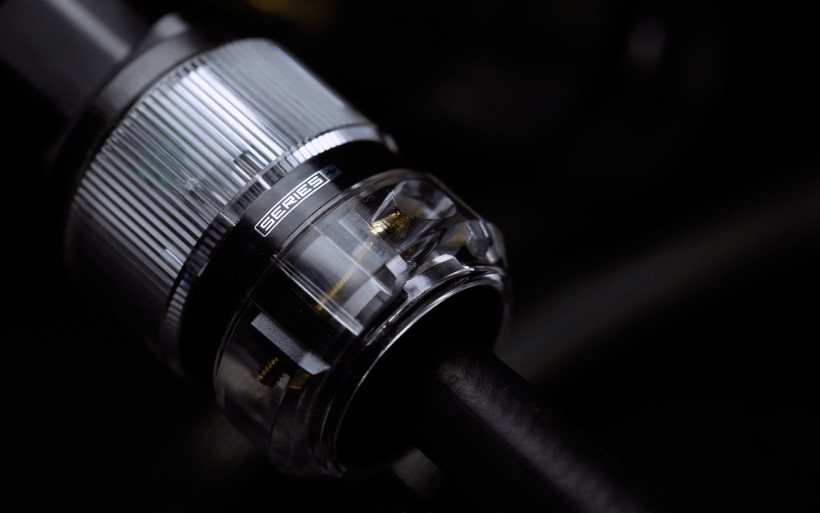 GigaWatt PC-2 EVO+ can be bought with any cable by the same manufacturer, though LC-3 MK3+ is suggested and that’s what was sent to me. If purchased separately, €990 is the asking price for this model. It’s quite stiff and that’s nothing out of ordinary, all GigaWatt cables are alike in this regard. There are eight solid-core strands of OFHC C10100 copper in total inside of LC-3 MK3+, each of 1.5mm2 cross-section. Conductors are isolated via elastic polyethylene with lowered dielectric constant, then wrapped in aluminium shielding foil and hid inside of soft PVC sheath topped with anti-static mesh afterwards. Plugs used in LC-3 MK3+ are GigaWatt’s proprietary models with gold-plated brass contacts and all connections are bolted and not soldered.
GigaWatt PC-2 EVO+ can be bought with any cable by the same manufacturer, though LC-3 MK3+ is suggested and that’s what was sent to me. If purchased separately, €990 is the asking price for this model. It’s quite stiff and that’s nothing out of ordinary, all GigaWatt cables are alike in this regard. There are eight solid-core strands of OFHC C10100 copper in total inside of LC-3 MK3+, each of 1.5mm2 cross-section. Conductors are isolated via elastic polyethylene with lowered dielectric constant, then wrapped in aluminium shielding foil and hid inside of soft PVC sheath topped with anti-static mesh afterwards. Plugs used in LC-3 MK3+ are GigaWatt’s proprietary models with gold-plated brass contacts and all connections are bolted and not soldered.
Sound
In order to review GigaWatt PC-2 EVO+, Polish Sveda Audio Blipo active monitors, Swiss Boenicke W8 speakers and English Trilogy 925 integrated amplifier were used. As per usual, LampizatOr Golden Gate (Psvane WE-101D + KR Audio 5U4G Ltd. Ed.) handled the D/A conversion task (…and volume control when needed) and was fed via Asus UX305LA. The main opponent of this review’s hero was GigaWatt PF-2 fronted by LS-2 MK2 power cable. Since PC-2 EVO+ arrived with LC3 MK3+ cable and these two were designed to work together, they weren’t separated. Here’s the story.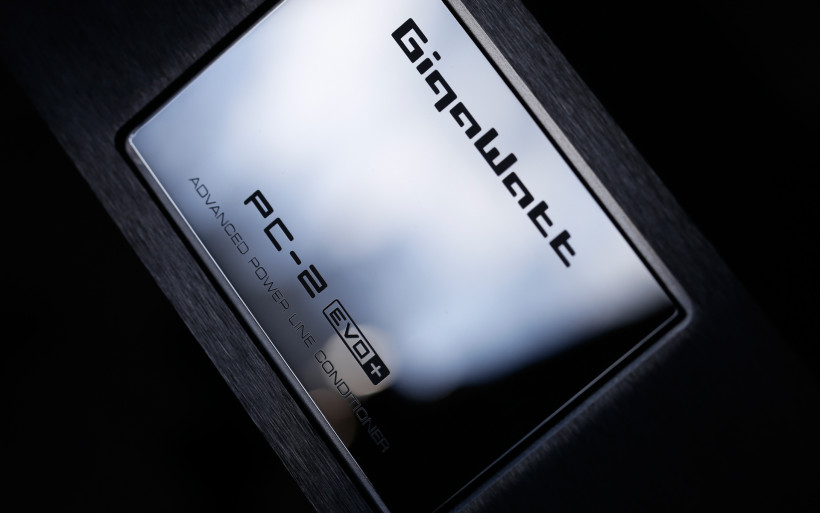 The initial agenda was very straightforward. At first Sveda Audio Blipo monitors were connected to my reference DAC. This minimalist, fully balanced, exceptionally versatile and in general impressive setup was very easy to play with. Both the power strip and the power conditioner by the same manufacturer were then connected via their respectable cables to a separate power line based on products also by GigaWatt; LC-Y MK3+ 3X4 in-wall cable, G-C20A circuit breaker and G-044 duplex wall socket. In order to switch between PF-2 and PC-2 EVO+, three cables in total had to change their places and the whole process took two minutes tops.
The initial agenda was very straightforward. At first Sveda Audio Blipo monitors were connected to my reference DAC. This minimalist, fully balanced, exceptionally versatile and in general impressive setup was very easy to play with. Both the power strip and the power conditioner by the same manufacturer were then connected via their respectable cables to a separate power line based on products also by GigaWatt; LC-Y MK3+ 3X4 in-wall cable, G-C20A circuit breaker and G-044 duplex wall socket. In order to switch between PF-2 and PC-2 EVO+, three cables in total had to change their places and the whole process took two minutes tops. The initial assumption was that GigaWatt PC-2 EVO+ will turn out to be even more extensive sorting service provider, though in general similar to PF-2 power strip by the same manufacturer. That’s why early expectations were very modest, somewhere in the tweaks land and not the major revamp realm. This was a safe starting point yet things escalated rather rapidly. Very revealing Blipo monitors swiftly and eagerly showcased several major differences between the two GigaWatt products. If we assume that – in comparison to a regular wall socketry – several years old PF-2 power strip makes the sound less grainy and thus inherently more orderly, then yes, PC-2 EVO+ goes in this direction as well. But at the same time the latter product does so much more. The longer I switched between these two, the more clear it became that they are not alike at all.
The initial assumption was that GigaWatt PC-2 EVO+ will turn out to be even more extensive sorting service provider, though in general similar to PF-2 power strip by the same manufacturer. That’s why early expectations were very modest, somewhere in the tweaks land and not the major revamp realm. This was a safe starting point yet things escalated rather rapidly. Very revealing Blipo monitors swiftly and eagerly showcased several major differences between the two GigaWatt products. If we assume that – in comparison to a regular wall socketry – several years old PF-2 power strip makes the sound less grainy and thus inherently more orderly, then yes, PC-2 EVO+ goes in this direction as well. But at the same time the latter product does so much more. The longer I switched between these two, the more clear it became that they are not alike at all. As a product developed to work mainly in the pro sector, Sveda Audio Blipo monitors are very potent in revealing recordings’ mastering quality and any changes within a given setup. Their reaction to GigaWatt PC-2 EVO+ was far greater than expected. Shortly after switching from my reference power strip, the sound got beefier and perceptively also a bit louder, though I can’t say whether this was true as no measurements were conducted. When tracks loaded with strong bass foundation were on, it was very obvious that gutsier, more muscular and a bit lower downstairs than previously was the case. Let’s invoke “Sabrina” by Einstürzende Neubauten, Lorde’s “Royals” or “Gambling House Massacre” from fabulous “Zatoichi” flick OST. These recordings have well-developed bass lines and additionally extended heavier low end was particularly audible in each once PC-2 EVO+ was on the job. The same story repeated itself with low FR generated by real instruments, i.e. drums in various musical pieces by Wardruna, Danheim and KODO, but the list was far longer. Although recorded averagely at best, generous portion of “Celloverse” LP by 2Cellos showcased the same scheme with string instruments this duo is the most known for. Bass performance upped on several counts with no obvious trade-offs was the conclusion.
As a product developed to work mainly in the pro sector, Sveda Audio Blipo monitors are very potent in revealing recordings’ mastering quality and any changes within a given setup. Their reaction to GigaWatt PC-2 EVO+ was far greater than expected. Shortly after switching from my reference power strip, the sound got beefier and perceptively also a bit louder, though I can’t say whether this was true as no measurements were conducted. When tracks loaded with strong bass foundation were on, it was very obvious that gutsier, more muscular and a bit lower downstairs than previously was the case. Let’s invoke “Sabrina” by Einstürzende Neubauten, Lorde’s “Royals” or “Gambling House Massacre” from fabulous “Zatoichi” flick OST. These recordings have well-developed bass lines and additionally extended heavier low end was particularly audible in each once PC-2 EVO+ was on the job. The same story repeated itself with low FR generated by real instruments, i.e. drums in various musical pieces by Wardruna, Danheim and KODO, but the list was far longer. Although recorded averagely at best, generous portion of “Celloverse” LP by 2Cellos showcased the same scheme with string instruments this duo is the most known for. Bass performance upped on several counts with no obvious trade-offs was the conclusion. Past the first hour of critical listening, the impression was that my PF-2 power strip was not only leaner, but also a bit feistier. This was audible especially with artificially generated bass, i.e. synth-made and not delivered via real instruments. Several tracks from “Ghosts” LP by Nine Inch Nails and then some by How To Destroy Angels – a side project of the same frontman – got me into thinking like so. Generous part of Trent Reznor’s work is above-the-average recorded and mastered, hence this observation wasn’t music quality related. That’s why for a good while I was certain that PF-2 held an edge over PC-2 EVO+ on the dynamic count. Not. The key to finding out what’s what exactly were – again – live instruments. Drums on KODO’s “Daraijin” track from “Mondo Head” LP are of various size and as such these deliver different scale and tension. GigaWatt PC-2 EVO+ was more generous as far as texturing goes and this on some recordings masked momentum in music. But with something as direct, agile and uncompressed as big Taiko drums, the Polish power conditioner easily bested its smaller sibling and the more I drowned in either minimalist instrument schemes or big orchestral pieces, the more and more obvious it became.
Past the first hour of critical listening, the impression was that my PF-2 power strip was not only leaner, but also a bit feistier. This was audible especially with artificially generated bass, i.e. synth-made and not delivered via real instruments. Several tracks from “Ghosts” LP by Nine Inch Nails and then some by How To Destroy Angels – a side project of the same frontman – got me into thinking like so. Generous part of Trent Reznor’s work is above-the-average recorded and mastered, hence this observation wasn’t music quality related. That’s why for a good while I was certain that PF-2 held an edge over PC-2 EVO+ on the dynamic count. Not. The key to finding out what’s what exactly were – again – live instruments. Drums on KODO’s “Daraijin” track from “Mondo Head” LP are of various size and as such these deliver different scale and tension. GigaWatt PC-2 EVO+ was more generous as far as texturing goes and this on some recordings masked momentum in music. But with something as direct, agile and uncompressed as big Taiko drums, the Polish power conditioner easily bested its smaller sibling and the more I drowned in either minimalist instrument schemes or big orchestral pieces, the more and more obvious it became.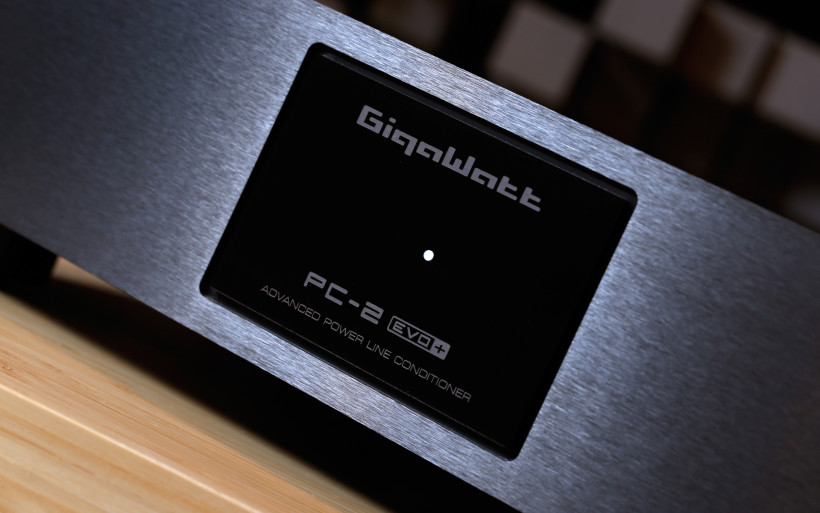 Thus far texturing generosity in the downstairs department was mapped, but we’re far from finished just yet. This aspect PC-2 EVO+ elevated in upper audible range as well, all across the board in fact. And because of pigment injection this present, my several years old reference power strip seemed to be a fair bit less saturated in the process, hence sounded more flat. Here we arrived to the two most prominent features of Adam Schubert’s bigger product: tangibility and vividness. In comparison to the reference PF-2 model, more densely packed and evolved muscles were hid under thinner skin, hence everything underneath was more exposed. Neither tonal balance shifted nor temperature was elevated, to write that PC-2 EVO+ was a hotter performer would’ve been a rather big mistake. A switch from my trusty old PF-2 to the pricier machine I could partially compare to a leap from an affordable ΣΔ DAC to a really good R2R performer. Yes, the latter was far more wallet-heavy and different, yet also undeniably beyond its smaller sibling’s reach. In a nutshell, it was a battle of two different classes of products and the more expensive one turned out to be simply far better. That’s the way it should be once asking prices of both are taken into account. One pays more and gets more in return.
Thus far texturing generosity in the downstairs department was mapped, but we’re far from finished just yet. This aspect PC-2 EVO+ elevated in upper audible range as well, all across the board in fact. And because of pigment injection this present, my several years old reference power strip seemed to be a fair bit less saturated in the process, hence sounded more flat. Here we arrived to the two most prominent features of Adam Schubert’s bigger product: tangibility and vividness. In comparison to the reference PF-2 model, more densely packed and evolved muscles were hid under thinner skin, hence everything underneath was more exposed. Neither tonal balance shifted nor temperature was elevated, to write that PC-2 EVO+ was a hotter performer would’ve been a rather big mistake. A switch from my trusty old PF-2 to the pricier machine I could partially compare to a leap from an affordable ΣΔ DAC to a really good R2R performer. Yes, the latter was far more wallet-heavy and different, yet also undeniably beyond its smaller sibling’s reach. In a nutshell, it was a battle of two different classes of products and the more expensive one turned out to be simply far better. That’s the way it should be once asking prices of both are taken into account. One pays more and gets more in return.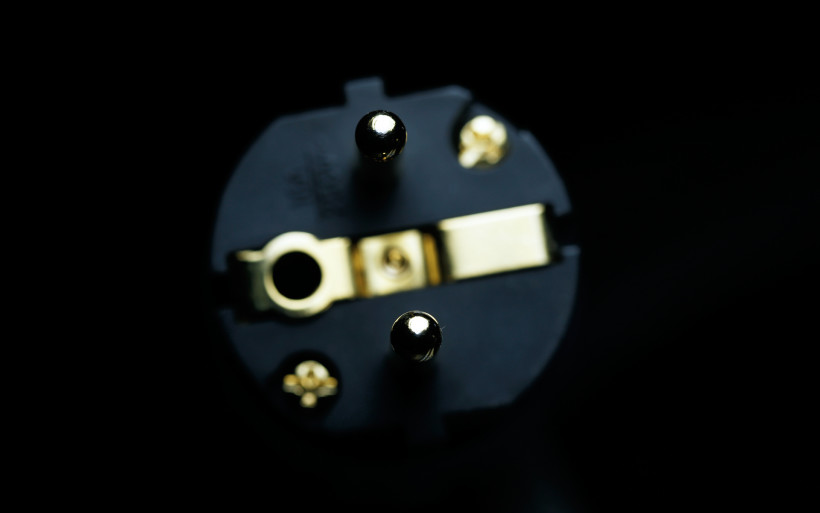 Imaging was yet another feature which indicated that PC-2 EVO+ was the superior product of the two. It drew instruments bigger, yet more finely separated, which is hardly any surprise as it was also more efficient background cleaner. In comparison to the PF-2 model, The bigger machine served the very first row a bit closer, hence in a more emphasized fashion and was able to differentiate layers placed deeper in the soundstage more easily on top of that. Both sounded similarly airy, but with all its virtues served at once, PC-2 EVO+ delivered music also more effortlessly.
Imaging was yet another feature which indicated that PC-2 EVO+ was the superior product of the two. It drew instruments bigger, yet more finely separated, which is hardly any surprise as it was also more efficient background cleaner. In comparison to the PF-2 model, The bigger machine served the very first row a bit closer, hence in a more emphasized fashion and was able to differentiate layers placed deeper in the soundstage more easily on top of that. Both sounded similarly airy, but with all its virtues served at once, PC-2 EVO+ delivered music also more effortlessly.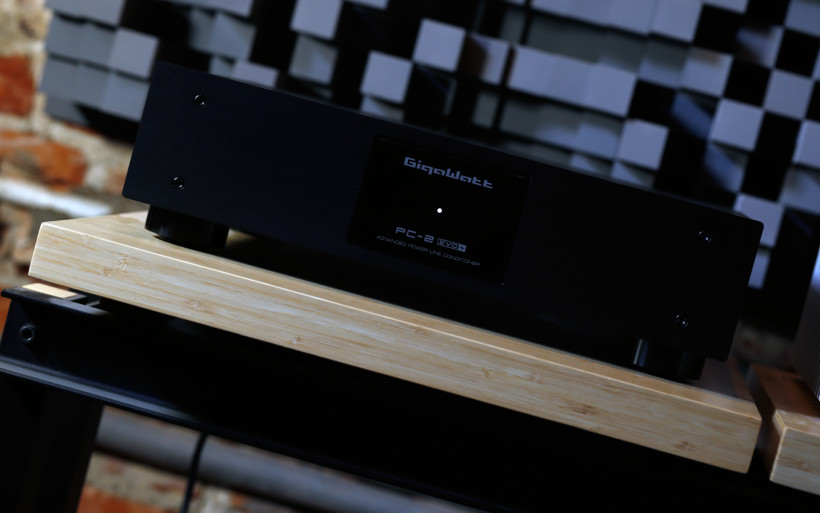 I wrote that the lively tissue all by itself was one of the biggest differences, whereas stronger gutsier bass followed and soundstaging capabilities of PC-2 EVO+ were in the same ballpark as well. For instance, space on “Dás Áiggun Cuozzut” by Mari Boine is one of the most noticeable things audible on this track. It brilliantly showcases guitars’ and single vocal line’s location and the same story is with a number of high FR additions. This connective ambience manifested itself as the true differentiator between two Polish products. It wasn’t about sheer size in every direction, this we’ve covered already, but the sensation of one organic and more expansive space at work in case of PC-2 EVO+ and surrounding a bit smaller, not this clean, less vivid and less orderly once the PF-2 was on the job.
I wrote that the lively tissue all by itself was one of the biggest differences, whereas stronger gutsier bass followed and soundstaging capabilities of PC-2 EVO+ were in the same ballpark as well. For instance, space on “Dás Áiggun Cuozzut” by Mari Boine is one of the most noticeable things audible on this track. It brilliantly showcases guitars’ and single vocal line’s location and the same story is with a number of high FR additions. This connective ambience manifested itself as the true differentiator between two Polish products. It wasn’t about sheer size in every direction, this we’ve covered already, but the sensation of one organic and more expansive space at work in case of PC-2 EVO+ and surrounding a bit smaller, not this clean, less vivid and less orderly once the PF-2 was on the job.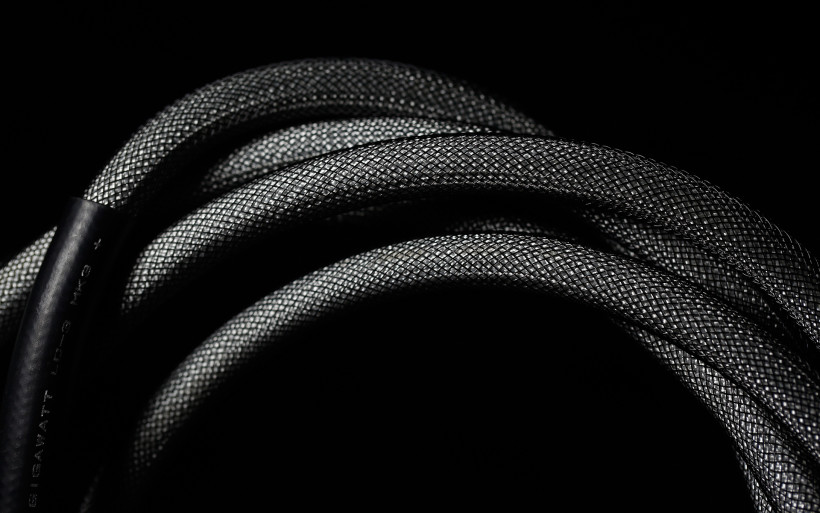 Blipo monitors showcased me something in Mari Boine’s recording I haven’t yet heard this clearly. Single bass strokes are heard throughout the whole track. At some point, once their initial sound fades away, pleasant rumble happens. It pumps the space additionally and makes it enjoyably resonant. Not boomy, but moving like a wave throughout the whole room instead. My point here is that – with Sveda Audio product on duty – this effect was very much audible with PC-2 EVO+ and far less so with PF-2. This wasn’t about bass amount or agility any longer, but environmental trickery hid in the above mentioned recording, very present with one machine and barely audible with the other. Later on, with music strongly focused on clean background and space itself (i.e. Michael Godard’s “Zefiro Torna”), this interesting effect was heard to various degrees. But the main takeaway here is that PC-2 EVO+ was able to quite potently deliver it whereas PF-2 wasn’t. All things considered, these two were from different quality realms, case closed.
Blipo monitors showcased me something in Mari Boine’s recording I haven’t yet heard this clearly. Single bass strokes are heard throughout the whole track. At some point, once their initial sound fades away, pleasant rumble happens. It pumps the space additionally and makes it enjoyably resonant. Not boomy, but moving like a wave throughout the whole room instead. My point here is that – with Sveda Audio product on duty – this effect was very much audible with PC-2 EVO+ and far less so with PF-2. This wasn’t about bass amount or agility any longer, but environmental trickery hid in the above mentioned recording, very present with one machine and barely audible with the other. Later on, with music strongly focused on clean background and space itself (i.e. Michael Godard’s “Zefiro Torna”), this interesting effect was heard to various degrees. But the main takeaway here is that PC-2 EVO+ was able to quite potently deliver it whereas PF-2 wasn’t. All things considered, these two were from different quality realms, case closed.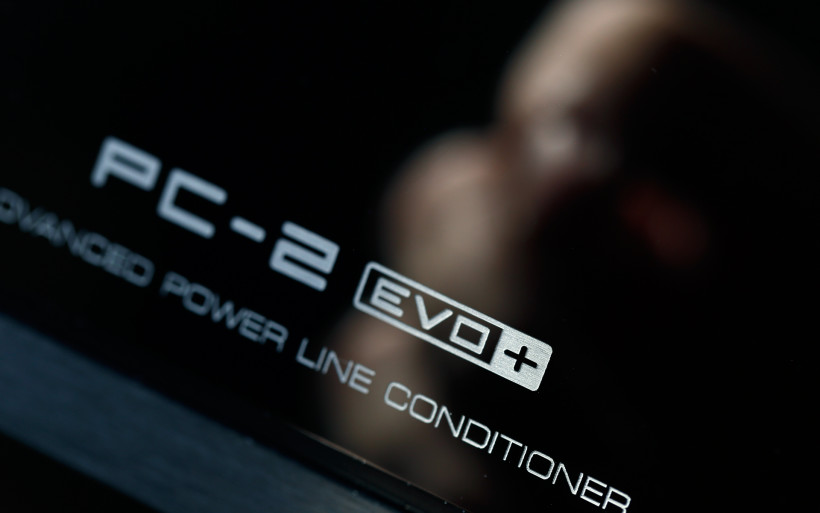 Past observations gathered thus far, only one thing was left to do. Sveda Audio Blipo were off duty and my daily drivers – Boenicke W8 and Trilogy 925 – got to work instead. When paired with this integrated fronted by Golden Gate, Swiss floorstanders are respectable as far as their bass performance goes. Since my rather low listening room fits the ‘troublesome’ description, this has to be taken into serious account with some downstairs heavy music. With more emphasis on bass, PC-2 EVO+ could’ve turned to be too much in this setup in comparison to the PF-2 power strip, yet it wasn’t. When hot-seated, I was still safe. No additional and unpleasant boom happened. Bass got beefier, reached deeper, was more complex yet in general remained in check, whereas imaging was the main focus. Sven Boenicke’s speakers are remarkable in this regard.
Past observations gathered thus far, only one thing was left to do. Sveda Audio Blipo were off duty and my daily drivers – Boenicke W8 and Trilogy 925 – got to work instead. When paired with this integrated fronted by Golden Gate, Swiss floorstanders are respectable as far as their bass performance goes. Since my rather low listening room fits the ‘troublesome’ description, this has to be taken into serious account with some downstairs heavy music. With more emphasis on bass, PC-2 EVO+ could’ve turned to be too much in this setup in comparison to the PF-2 power strip, yet it wasn’t. When hot-seated, I was still safe. No additional and unpleasant boom happened. Bass got beefier, reached deeper, was more complex yet in general remained in check, whereas imaging was the main focus. Sven Boenicke’s speakers are remarkable in this regard.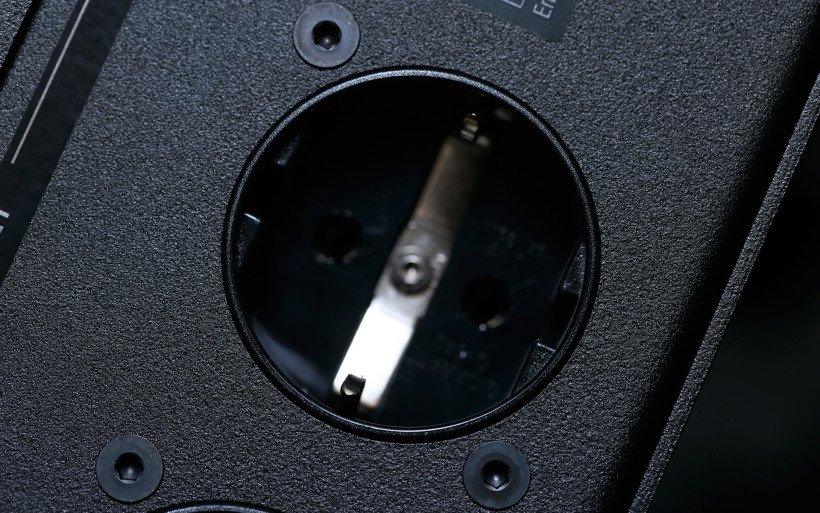 With PF-2, Swiss boxes drew space impressive and tidy. Yet when PC-2 EVO+ stepped in, not only the same image became additionally amplified and clearer, but also the whole outcome was properly hydrated, moist so to speak. Before anything happened – and being fully aware that my 925 integrated isn’t the most suitable to handle difficult W8 load – I do wondered whether I’ll hear these floorstanders any more agile than usually. In short, the sound got a bit more springy indeed, yet the space itself remained in the spotlight. This feature was the main attention thief regardless of other alterations and improvements. For the second time the PC-2 EVO+ turned out to be not only more spacious, but also more generous on tangibility and vividness counts in comparison to the PF-2. The history repeated itself once more, only one product remained on the battlefield yet again. Let’s summarize.
With PF-2, Swiss boxes drew space impressive and tidy. Yet when PC-2 EVO+ stepped in, not only the same image became additionally amplified and clearer, but also the whole outcome was properly hydrated, moist so to speak. Before anything happened – and being fully aware that my 925 integrated isn’t the most suitable to handle difficult W8 load – I do wondered whether I’ll hear these floorstanders any more agile than usually. In short, the sound got a bit more springy indeed, yet the space itself remained in the spotlight. This feature was the main attention thief regardless of other alterations and improvements. For the second time the PC-2 EVO+ turned out to be not only more spacious, but also more generous on tangibility and vividness counts in comparison to the PF-2. The history repeated itself once more, only one product remained on the battlefield yet again. Let’s summarize.
Summary
Adam Schubert has been around long enough to be recognized as a veteran with no ifs and buts. I’ve trusted the man with his entry level PF-1 power filter years ago and am happy with it ever since, then GigaWatt PF-2 became a part of my reference setup and the same result followed. And now, after the PC-2 EVO+ experience, I can only say that this gent runs one of the most known Polish audio houses for a perfectly good reason. There’s no coincidence here.
In the audio industry, to have everything optimized, automated and based on in 100% in-house designed semi-parts not only takes time, resources and dedication, but also builds confidence from a customer’s perspective. And as a long-time GigaWatt user, I feel perfectly confident about this company’s visually very much vanilla flavoured PC-2 EVO+. Not an item of jewelry alike status but a no frills audio hardware instead, it was designed to do a very specific job, built to last and withstand many unpleasant things. I can’t comment on effectiveness of PC-2 EVO+’s protective circuitry. But being fully aware of how knowledgeable Adam is, my setup’s safety not even once crossed my mind during this machine’s reviewing process and the same story is with other GigaWatt products used daily.
Although GigaWatt PC-2 EVO+’s potency in setups other than mine remains a mystery, one thing I do know now. Ordinary wall sockets were effortlessly bested by GigaWatt PF-2 years ago, which now has been surpassed by this review’s hero with similar ease. That’s the main takeaway of this review, hence if you’re on a lookout for a proper power conditioner from the ~ €3’000 realm, GigaWatt PC-2 EVO+ might turn out to be just the thing you were after all along. Bravo, Adam. ‘Till next time!
Associated equipment:
- Amplifiers: Trilogy 925
- Sources: Lampizator Golden Gate (Psvane WE101D-L + KR Audio 5U4G Ltd. Ed.)
- Speakers: Boenicke Audio W8, Sveda Audio Blipo
- Transports: Asus UX305LA
- Speaker cable: Forza AudioWorks Noir Concept, Audiomica Laboratory Celes Excellence
- Interconnects: Forza AudioWorks Noir, Audiomica Laboratory Erys Excellence
- Power supply: Gigawatt PF-2 + Gigawatt LC-2 MK2 + Forza AudioWorks Noir Concept/Audiomica Laboratory Ness Excellence
- Rack: Franc Audio Accesories Wood Block Rack
- Music: NativeDSD
Retail prices of reviewed components in EU (excl. VAT):
- GigaWatt PC-2 EVO+ with LS-1 MK3+ cable: €4’410
- GigaWatt PC-2 EVO+ with LC-3 MK3+ cable: €3’330
- GigaWatt PC-2 EVO+ with LC-2 MK3+ cable: €3’030
- GigaWatt PC-2 EVO+ with LC-1 MK3+ cable: €2’730
- DC Blocker for PC-2 EVO+ / PC-1 EVO: €300
Manufacturer: GigaWatt



